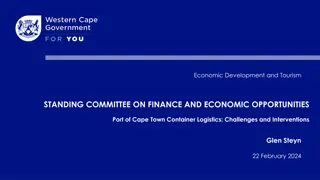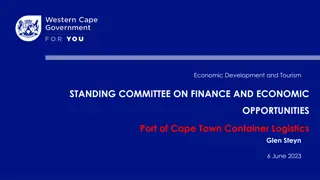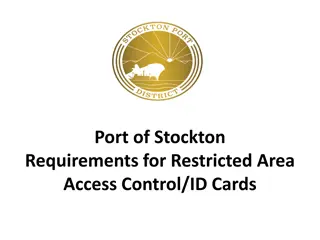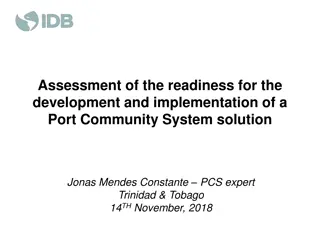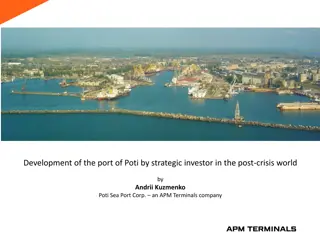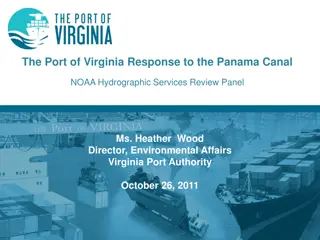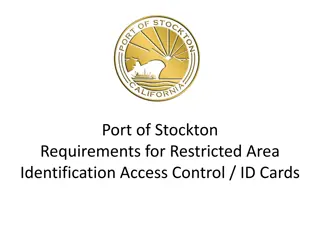Impact of Climate Change on the Port of Cape Town
The Port of Cape Town, a critical infrastructure asset, faces challenges due to climate change. Rising temperatures have led to droughts, affecting cargo handling and operations. Additionally, rising sea levels threaten port infrastructure and equipment. Increased temperatures pose risks to employees and result in high energy consumption. Wind fluctuations also impact vessel stability and cause delays in port activities.
Download Presentation

Please find below an Image/Link to download the presentation.
The content on the website is provided AS IS for your information and personal use only. It may not be sold, licensed, or shared on other websites without obtaining consent from the author. Download presentation by click this link. If you encounter any issues during the download, it is possible that the publisher has removed the file from their server.
E N D
Presentation Transcript
Group members Xolile Khumalo 21327332 Nomfundo Kubheka 21706839 Buyisile Kunene 21319936 Nqobile Madlala 21708647 Nomaswazi Mcira 21627853
Introduction The port we have selected is the port of Cape Town The port of Cape Town provides container, bulk and general cargo handling services Ports are critical infrastructure assets that serve as catalysts of economic growth and development
Climate Change in The port of Cape Town One of the main causes of climate change is air pollution. When people pollute, temperatures rise and this may lead to low rain falls. Recently Cape Town was facing a drought, which was caused by the rise in temperature. Besides the rise in temperature and droughts, climate change can also cause sea levels to rise, it can cause floods, rise in carbon dioxide, etc. Climate change can also lead to changes in the wave energy and direction. This may affect vessels on voyage because accidents may occur due to the high speed of waves. Cargo can be damaged. The vessel can be delayed and this will affect the port because port operations will also be delayed.
Rising sea levels The rising sea levels are caused by heavy rain falls due to climate change. This may affect the port of Cape Town because it will cause damages to port infrastructure, equipment's and cargo that is already in the port.
Increase temperature It damages the port infrastructure. Increase high health risk of employees. High energy consumption for cooling terminals and cargo. Rising will affect finances of the port business in paying for the expenses of electricity for the usage of air conditions.
Wind Due to high wind, the vessels are not always in stable position while in berths. It course delays in port due to rising in sea levels. Damage navigation and equipment in port. It course damage in old buildings and warehouse.
Drought in Cape Town The port export agricultural products. Drought affect demand and supply of goods. Reduce in exports because there is shortage in trade of agricultural products. Reduce GDP. Increase in cost of production because it becomes hard to produce.
Existing Constraints in the port of Cape Town Infrastructure constraint the port is facing a problem of an infrastructure being old. Port operational constraints as the port losing volumes in the container market Economical constraints the port is unable to handle the container and vessel traffic despite a decline in economy and export, due to the cause of infrastructure being old.
With regard to strategies used by the port of Singapore, this is how the port of Cape Town can resolve the issue of climate change Reduction of emission. Limitation of access on renewable energy that increase climate change. Commission of the risk map study. Reduction of rising sea level and temperature. Build or secure appropriate technical capacity. Manage higher priority first. Ensure adaptation is efficiency.




